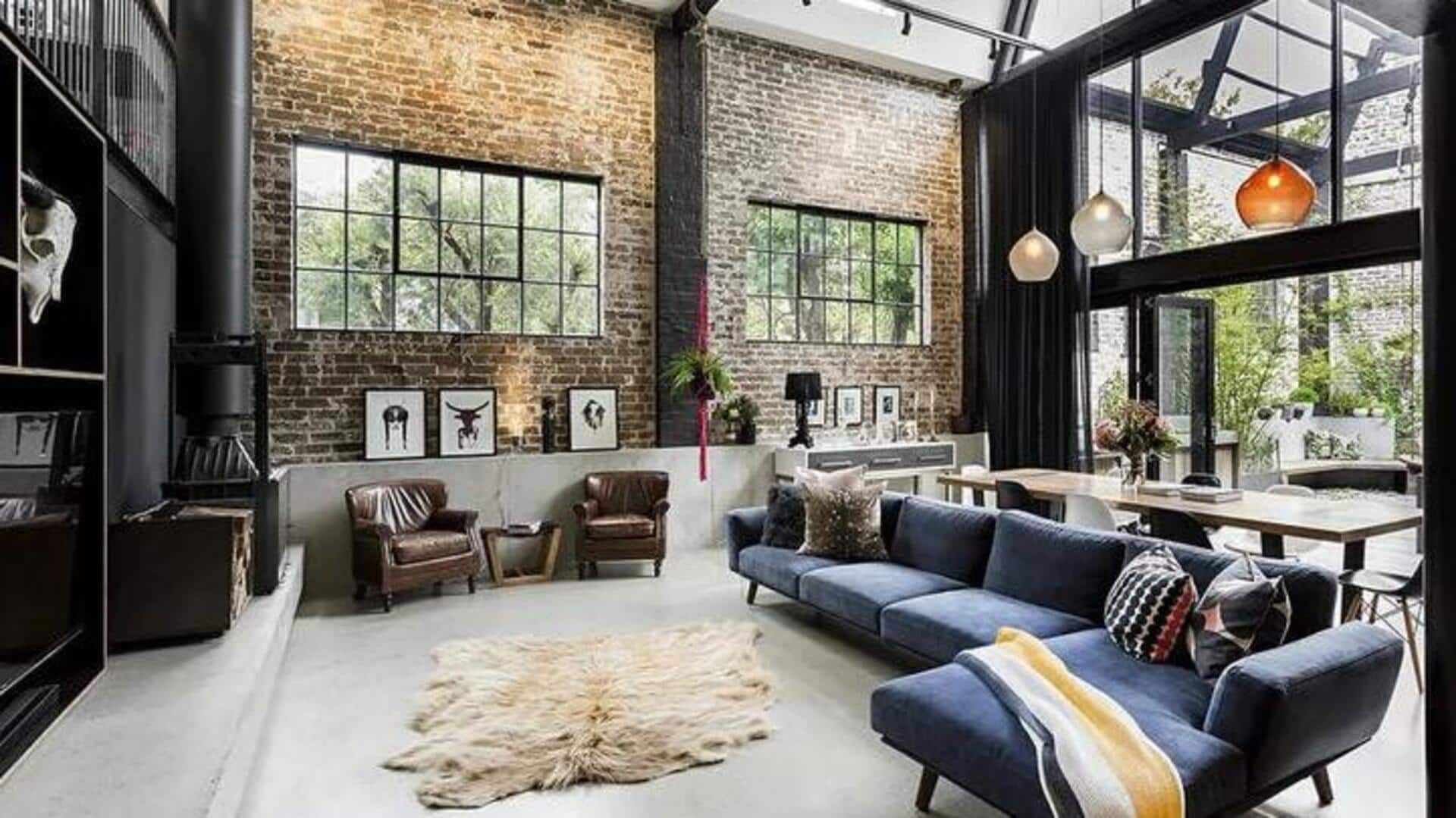
Rustic industrial decor: Concept and how to incorporate
What's the story
Rustic industrial decor is the perfect amalgamation of warm rustic elements and cool, sleek modern industrial ones. It results in the most inviting yet contemporary spaces. By mixing natural materials like wood and stone with metal and concrete, it hits the right notes. It attracts people who love vintage charm but don't mind the modern touch. Here's how you can nail this balance at home.
Natural elements
Embrace natural materials
Incorporating natural materials is the key to achieving a rustic industrial look. Wood, stone, and brick add warmth and texture to any space. You can use reclaimed wood for flooring or furniture for an authentic rustic feel. Stone accents on walls or fireplaces enhance the earthy vibe, and exposed brick adds character. These elements create a foundation that balances the coldness of industrial design.
Metal features
Incorporate metal accents
Metal is essential in industrial decor because it brings structure and contrast to softer elements like wood. From steel beams and iron fixtures to copper piping, you can incorporate metal into different elements of your home design. Metal light fixtures lend an edgy touch without taking over the room. The trick is to use metal in moderation as accents, not as show stealers, to keep the balance.
Color choices
Use neutral color palettes
Neutral color palettes are integral to rustic industrial decor, as they form a cohesive backdrop for other elements of the room. Shades like gray, beige, white, and black complement each other without clashing with natural textures or metallic finishes seen in furniture pieces or architectural details such as beams or pipes running along ceilings.
Furniture Blend
Mix vintage & modern furniture
Mixing vintage finds with modern pieces adds visual interest to rooms designed around this theme by contrasting old-world charm with contemporary lines on newer items like sofas or tables made from glass-topped surfaces resting on sleek legs made out of steel tubing instead of regular wooden frames used more commonly elsewhere around house interiors nowadays.
Texture variety
Add textural layers
Layering different textures softens harsh edges that are common in purely utilitarian spaces typical of only urban homes where minimalism takes charge. Think plush rugs underfoot, leather armchairs draped over cozy throws atop cushions covered in richly woven fabrics, all contributing to the overall sense of comfort and coziness one craves when looking for something to come home to after a long day spent outside.